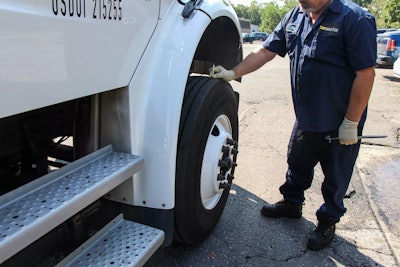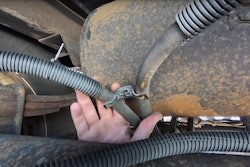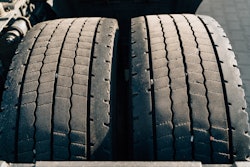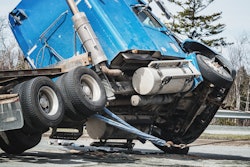Electric and other alternative power vehicles are all the rage when it comes to sustainability as regulations begin to propel fleets to phase these vehicles into our day-to-day operations. While EVs and alternative fuel vehicles address greenhouse gas (GHG) and California Air Resources Board (CARB) regulations, there are best practices that fleets can use while still running diesel powered equipment to lower their carbon footprint.
Fleets will increase their sustainability efforts greatly by closely monitoring tires, engine parameters and oil sampling.
Effective tire management and fuel savings
 The rolling resistance of a tire decreases as it wears, providing an added benefit to fuel consumption.
The rolling resistance of a tire decreases as it wears, providing an added benefit to fuel consumption.
Tires can be an important contributor to fuel economy. Maintaining tire pressure within 5% under to 20% over the recommended pressure can lead to a 2% increase in miles per gallon.
The rolling resistance of a tire decreases as it wears, providing an added benefit to fuel consumption. For example, a 30% worn tire would experience a 2% savings; 50% worn tread would gain 4.5%; and an 80% worn tread would add an additional 6.5% to fuel economy. If the rolling resistance decreases by 10%, the result is between a 2.5% to a 3% decrease in fuel consumption. While it is wise to run your tires to pull points, do not run tires out of Department of Transportation (DOT) specs while chasing MPG gains.
Tires typically lose 1.5 to 2 psi of air pressure each month and there is a change of 1 psi per each 10 degrees of temperature change and every 2,000 feet in altitude. How often you check and adjust your pressures will increase the life of your tires and increase your MPG.
Optimizing engine parameters
The correct engine parameter settings can have a direct impact on MPG. There are a variety of parameter settings that can be adjusted to optimize fuel economy, including road speed, speed at cruise control, PasSmart/reverse speed, adaptive cruise control, predictive cruise/IPM, E–Coast/Smart Coast, crest and dip coasting, idle shutdown times, optimize idle and vehicle acceleration management.
Checking engine parameters during preventive maintenance service ensures tampering is corrected and that parameters are adjusted back to fleet spec. During a preventive maintenance service, the technician can correct all faults codes, ensuring optimum performance of the aftertreatment system.
Remember that at 10 mph over 55 mph you lose 1 MPG. A 1 mph average increase in road speed results in the loss of 2% in fuel economy.
The benefits of oil sampling
The use of oil sampling and lengthening oil drain intervals can reduce oil consumption. Understanding your operation and using data from the sampling will allow you to safely extend drains while still optimizing performance. Keep in mind that as you extend mileage, watch how often you are bringing the units in for PM service. When you extend oil drain intervals, PM compliance takes on increased importance as a missed PM service with extended drain intervals can have significant negative consequences.
If you are uncomfortable with extending out how often you see your vehicles, be sure to implement linked PMs as a way to still see the units. However, train your technicians to understand when an oil drain is necessary and when it is not.












